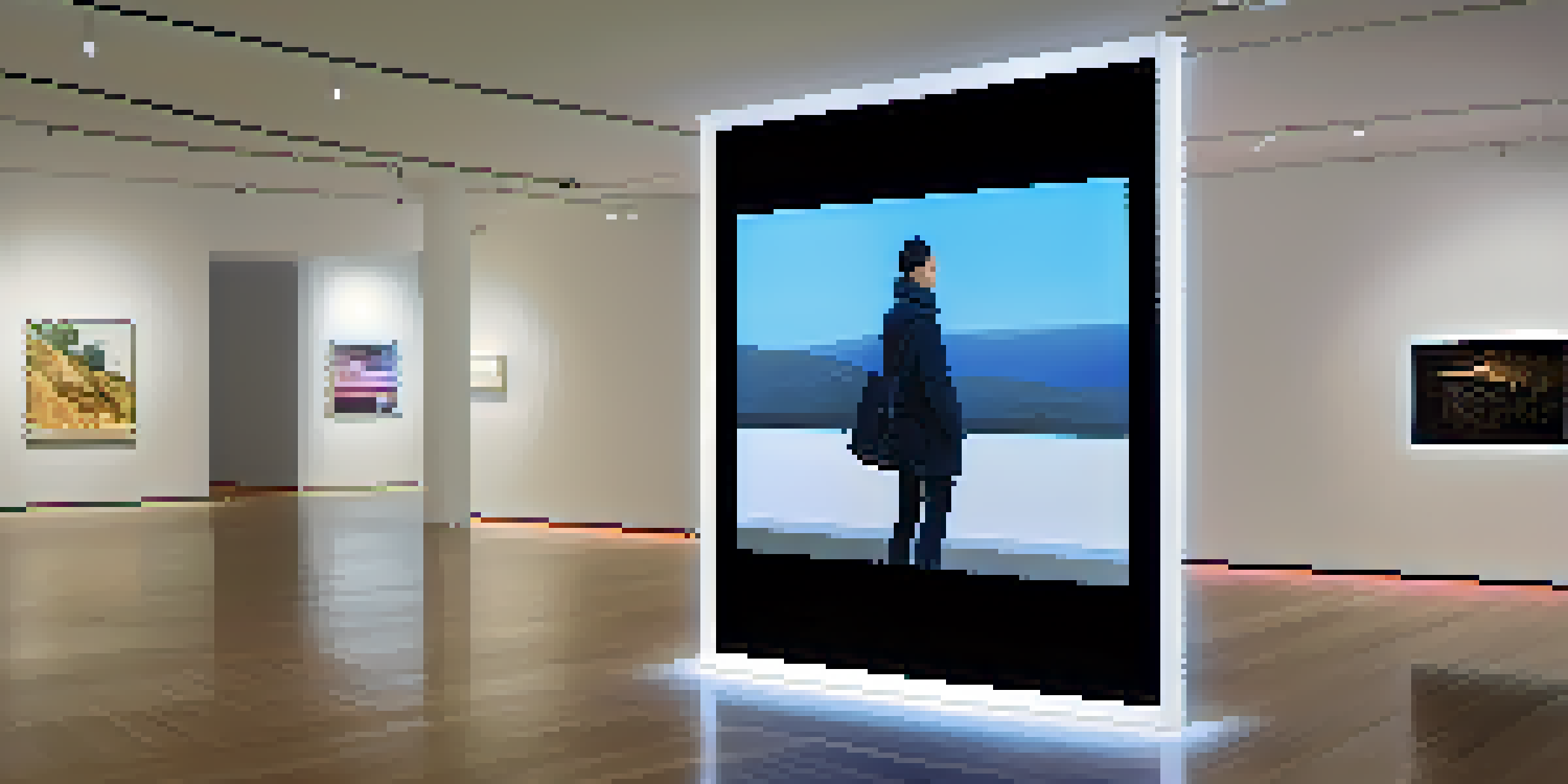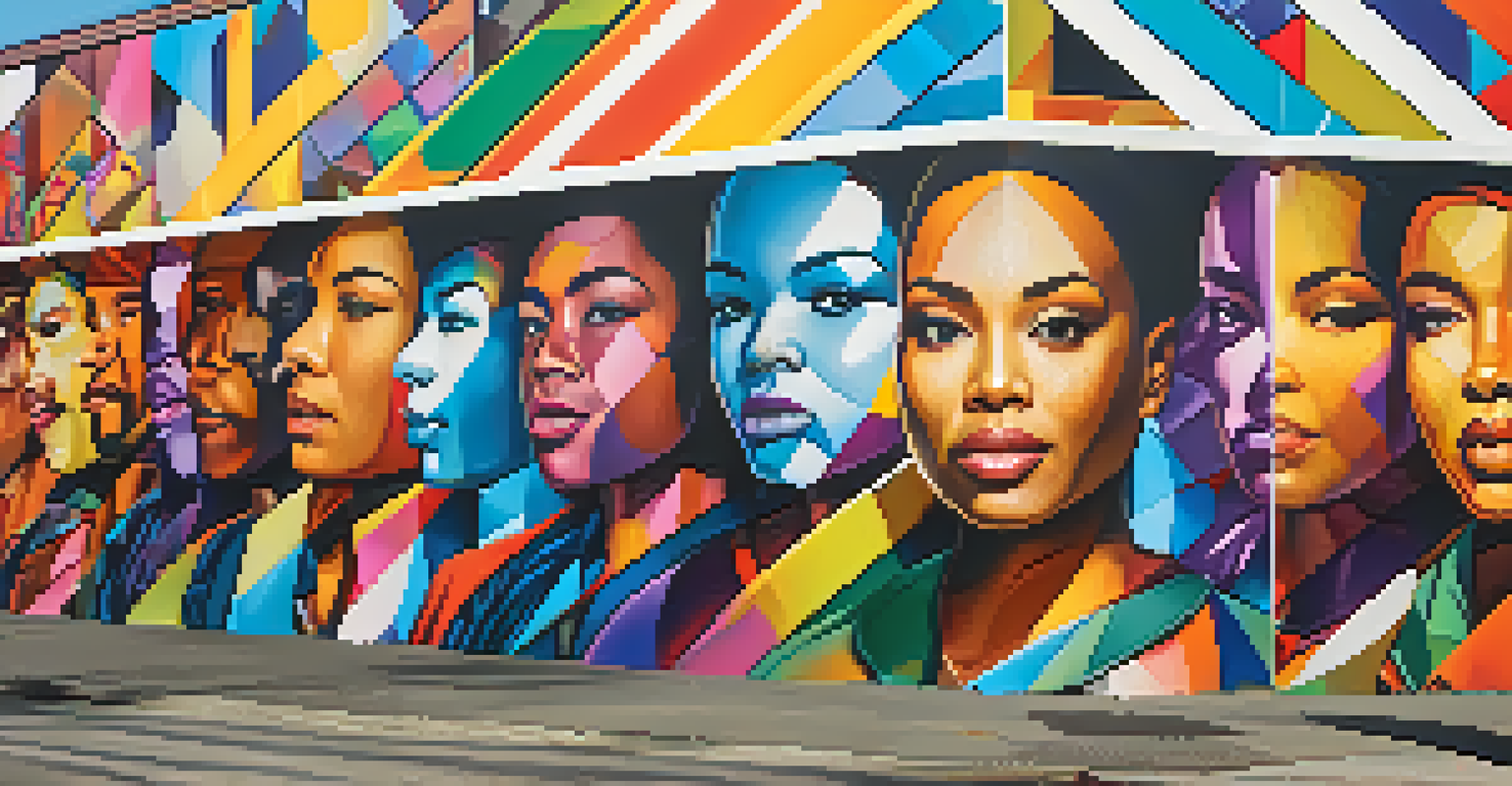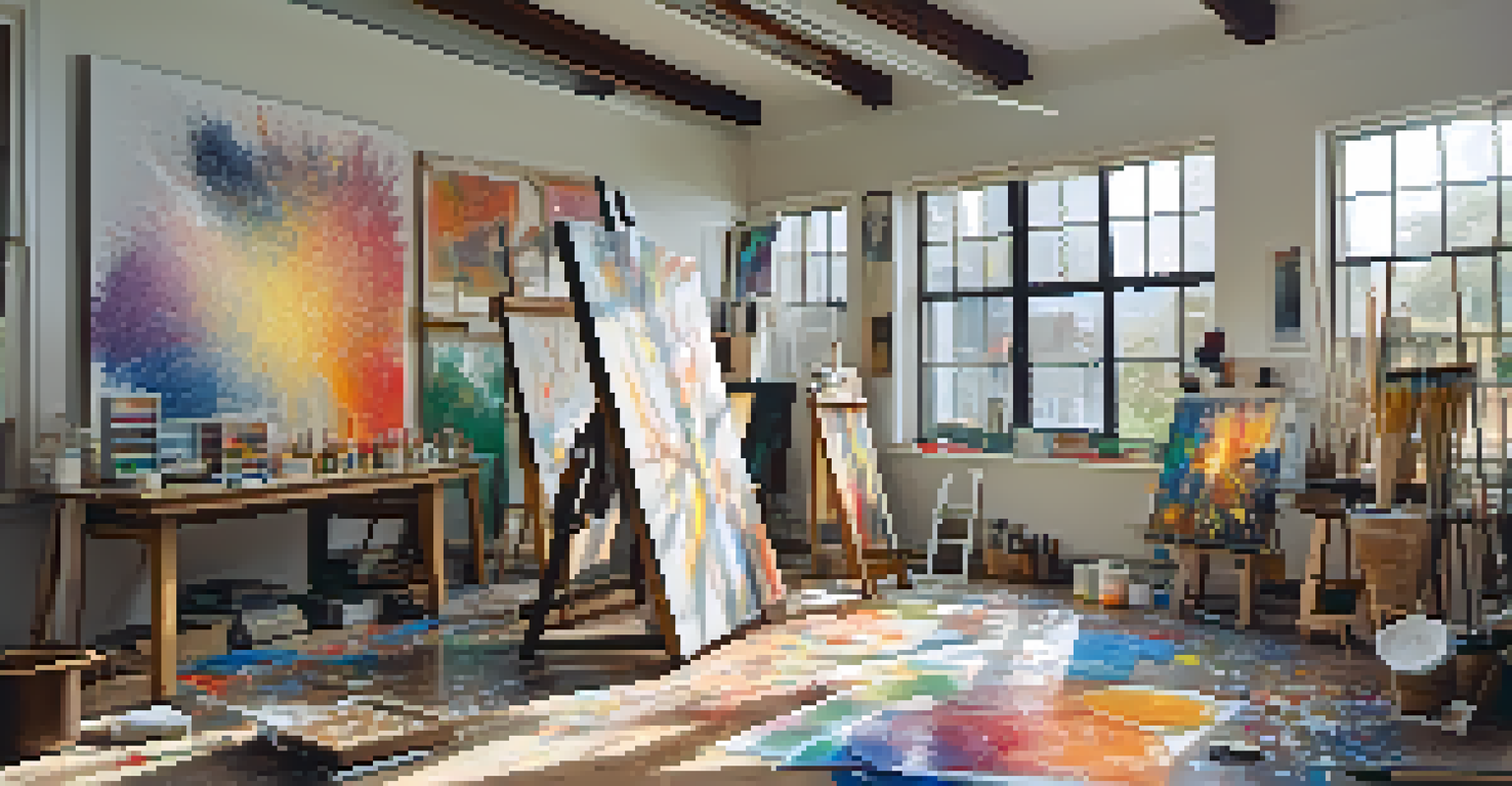Exploring the Intersection of Identity Politics and Art Forms

Understanding Identity Politics in Contemporary Society
Identity politics refers to political positions based on the interests and perspectives of social groups, often defined by race, gender, or sexual orientation. In today's diverse society, these identities shape how individuals engage with the world around them. The rise of identity politics has prompted discussions about representation and inclusivity, sparking debates within various fields, including art.
Art is not a mirror to reflect reality, but a hammer with which to shape it.
Art is a powerful vehicle for social change and can reflect the complexities of identity. Artists often use their work to express personal experiences tied to their identities, turning their struggles and triumphs into creative expression. This dialogue between identity and art allows for a deeper understanding of cultural dynamics, making the artwork more relatable and resonant with diverse audiences.
As we explore this intersection, it's essential to recognize that identity politics is not just about categorization but about amplifying voices that have historically been marginalized. This shift encourages artists to reflect on their identities and how these experiences influence their work, ultimately enriching the art community as a whole.
The Role of Artists in Shaping Identity Narratives
Artists have long been at the forefront of cultural movements, using their platforms to challenge societal norms and reshape narratives around identity. Through various mediums—painting, sculpture, performance, and more—these creative minds convey stories that resonate with their communities. Their work often provokes thought and discussion, encouraging viewers to confront their own biases and perceptions.

For example, artists like Frida Kahlo and Jean-Michel Basquiat utilized their personal experiences to comment on race, gender, and class struggles, creating art that serves as both a personal diary and a social critique. Their legacies inspire contemporary artists to explore their identities and the realities of their communities, fostering a richer dialogue around representation in art.
Identity Politics Shapes Art Today
Artists use their identities to create work that reflects personal experiences and social issues, fostering deeper connections with diverse audiences.
This movement has also led to the emergence of new art forms and styles that celebrate diversity. By prioritizing narratives that reflect a broader spectrum of identities, artists create a more inclusive environment where everyone feels seen and heard. This evolution encourages artists to push boundaries, explore new themes, and engage with their audiences on a deeper level.
Art as a Medium for Social Justice and Activism
Art has always served as a form of protest and a means of advocating for social justice. In the context of identity politics, artists often harness their creative skills to highlight injustices faced by marginalized communities. From street art to installations, these expressions can ignite conversations and drive movements, making art an essential tool for activism.
The role of the artist is to make the revolution irresistible.
For instance, the works of artists like Ai Weiwei and Banksy highlight pressing social issues, challenging viewers to confront uncomfortable truths. Their art transcends traditional boundaries, using visual language to communicate messages of resistance, hope, and change. By doing so, they not only raise awareness but also inspire action and solidarity among diverse groups.
This intersection of art and activism underscores the idea that creativity can be a catalyst for change. When artists infuse their work with political messages related to their identities, they invite audiences to engage in dialogue and reflection. This process enriches our understanding of social issues and fosters a sense of community among those who share similar struggles.
Exploring Intersectionality in Artistic Expression
Intersectionality is a concept that recognizes how different aspects of a person's identity—such as race, gender, and socioeconomic status—interact and overlap. In art, this notion allows for a more nuanced exploration of identity, as artists draw from multiple experiences to create layered narratives. By addressing these intersections, artists can present a more comprehensive view of social issues.
For example, contemporary artists like Carrie Mae Weems and Yinka Shonibare use their work to explore the complexities of identity beyond singular categories. Their art often highlights the interconnectedness of various social issues, prompting viewers to consider how these elements influence one another. This approach not only enriches the artwork but also deepens the audience's understanding of broader societal dynamics.
Art as Activism for Social Change
Creative expressions serve as powerful tools for activism, addressing injustices faced by marginalized communities and inspiring dialogue.
Embracing intersectionality in art challenges traditional representations and encourages diverse perspectives. This shift allows for a more inclusive art world where artists feel empowered to express their unique identities. As a result, audiences gain access to a richer tapestry of experiences, fostering empathy and understanding across different communities.
The Influence of Digital Media on Identity and Art
The digital age has revolutionized how artists engage with their identities and share their work. Platforms like Instagram, TikTok, and YouTube allow creators to reach global audiences, breaking down geographical barriers and democratizing art. This accessibility empowers artists from diverse backgrounds to showcase their unique perspectives, amplifying voices that were once marginalized.
Through social media, artists can engage in conversations about identity politics in real time, creating communities that foster collaboration and support. Digital art forms, such as video art and virtual reality experiences, provide innovative ways for artists to express their identities and challenge societal norms. This evolution not only transforms traditional art forms but also redefines the relationship between artists and their audiences.
Moreover, the online art world encourages dialogue around representation and inclusivity. As artists share their work and stories, they invite viewers to reflect on their own identities and the complexities within them. This ongoing conversation can lead to greater awareness and understanding, promoting a more inclusive narrative within the art community.
Challenges Faced by Artists in Identity Politics
Despite the progress made in recognizing diverse identities within the art world, many artists still face significant challenges. Issues such as tokenism, funding disparities, and lack of representation in galleries can hinder the visibility of marginalized voices. These obstacles can create a frustrating landscape for artists striving to share their unique stories and experiences.
For example, many artists report feeling pressured to conform to specific narratives that align with mainstream expectations of their identities. This pressure can lead to a sense of disconnection from their authentic selves, stifling their creativity and expression. The struggle to balance commercial viability with personal integrity often complicates an artist's journey.
Digital Media Amplifies Diverse Voices
Platforms like social media empower artists to share their unique perspectives globally, promoting inclusivity and representation in the art world.
Addressing these challenges requires a collective effort from the art community, including curators, collectors, and audiences. By actively seeking out and supporting diverse artists, we can foster an environment that values authenticity and inclusivity. This shift not only benefits artists but also enriches the cultural landscape, creating a more vibrant and representative art world.
The Future of Identity Politics in Art
As society continues to evolve, so too will the dialogue surrounding identity politics in art. The ongoing exploration of diverse identities promises to yield new narratives and artistic expressions that reflect our ever-changing world. This evolution presents exciting opportunities for artists to challenge conventions and push boundaries in their work.
Emerging technologies, such as virtual reality and artificial intelligence, will likely play a significant role in shaping the future of art. These innovations can provide new avenues for artists to explore their identities and engage with audiences in immersive and interactive ways. This adaptability will be crucial as artists navigate the complexities of identity politics in a rapidly changing landscape.

Ultimately, the future of identity politics in art hinges on the continued advocacy for inclusivity and representation. By supporting diverse voices and encouraging open dialogue, we can create a more vibrant and equitable art world. This commitment will ensure that the stories of all identities are celebrated and that the transformative power of art continues to thrive.